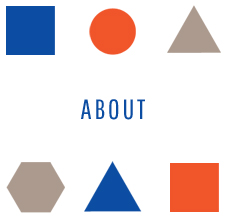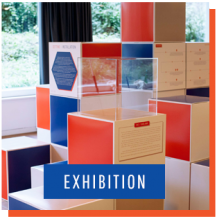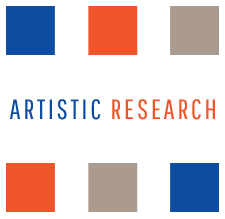In order to examine the complex nature of religious icons the project team combines spatial, material-aesthetic and semio-communicative approaches with discourse analysis and reception studies. Through qualitative field research in Amsterdam, Berlin and London the researchers produce fresh case materials about encounters evolving around religious icons in urban spaces. Their results are based on sociodemographic and historical analysis as well as on ethnographic fieldwork (theme-orientated / autobiographic interviews, participant observation).
In this section, you can read selected works written by the research team. The texts can also be found in the catalogue that was produced during the course of the project, which can be purchased at Metropol Verlag.
INTRODUCTION | THE URBAN SACRED: HOW RELIGION MAKES AND TAKES PLACE IN AMSTERDAM, BERLIN AND LONDON
Where do we find the sacred in today’s metropoles? How does religion take place in the city? And where do people locate their gods amidst the buzz of everyday urban life? The Urban Sacred investigates these questions by exploring the presence of religion in Amsterdam, Berlin and London. It shows that these cities, commonly counted among the most secularized places of the world, continue to be permeated by religion – albeit in sometimes unexpected ways. ...
AMSTERDAM
The research in Amsterdam is carried out by Dr. Daan Beekers in cooperation with Professor Birgit Meyer (both from Utrecht University). It focuses on the conversion of church buildings in this city, a widespread phenomenon that entails the re-use of church buildings for either secular or religious purposes. ...
SACRED RESIDUE
When I first visited the Fatih Mosque, housed in a former Jesuit church in the centre of Amsterdam, its spokesperson, Mehmet Yamali, took me to the prayer space located in what used to be the church’s nave. Standing in the middle of that impressive space, marked by an extraordinary mix of Christian and Islamic elements, Mehmet said that he experienced it as a very special place due to its “spiritual charge”. He felt that it held an “essence” – also witnessed in the great mosques of Istanbul – because it had been built “with love and faith” by the Catholic community in the 1920s. ...
MOBILITY
Movement defines our cities. The speed of construction, the ever-expanding transport network, the comings and goings of people. These are places of action. Charles Dickens described the capital as "in the midst of a whirl of noise and motion". Yet cities also provide their inhabitants with places of solace and prayer away from the bustle. Thus, as Dickens knew all too well, even in the “stranger's wilderness of London”, amid the congestion and commotion, architectural features such as steeples, spires and domes can “grow more ethereal”. ...
GEOGRAPHIES OF THE URBAN SACRED
Take any square mile in Amsterdam, Berlin or London. Religion takes its place within an urban ecology and built environment dedicated to labour, trade and travel, dining and drinking, culture and media. Although formally open to the public, religious buildings house the private and mysterious practices of the faithful. A feature of the city’s façade and skyline, with signage announcing their presence and purpose, they signal other worlds beyond commerce and tourism. ...
WHAT IS A RELIGIOUS ICON?
Imagine a Christian church, a Jewish synagogue, a Hindu temple, a Muslim mosque, and a Buddhist stūpa. Respectively, you might visualise a building with a tower, maybe with a cross on top of it, and another on which a Star of David is fixed, a third building in the shape of a square with concentric layers, one with at least one tower and a crescent moon, and another with a bell-shaped top. ...
ENGELBECKEN IN BERLIN KREUZBERG
Engelbecken is unique, not only as a historical landscape but also as an urban one. Located in the district of Kreuzberg, it forms the pivotal point of the Berlin setting. Engelbecken’s history, which is more than 200 years old, tells of people, migration and materiality. It’s an impressive demonstration of how the public sphere has been transformed by religious and migration-related practices. ...
AESTHETICS
Aesthetics are essential to life. There can be no cultural or religious encounter without aesthetics. In our research on the urban sacred and its presentation in this exhibition, we have drawn on an aesthetics approach. ...
LUISENSTADT PERSPECTIVES | SACRED BUILDINGS UNDER THE TENSION OF BERLIN’S URBAN DEVELOPMENT AROUND 1848
It has been said that Berlin boasts more bridges than Venice and more churches than Rome. Berlin’s urban landscape today is indeed still dominated by the sacred buildings of the 19th century. Considering the number of church steeples rising out of the cityscape, the comparison with Rome may be bold but not entirely absurd; in many parts of Berlin, church spires form a central feature of the city streets and can often be seen for miles around. ...
TANGIBLE TRANSCENDENCE AND THE PRESENCE OF RELIGION IN URBAN SPACE
Since the turn of the century, the resurgence of religion has been a much debated topic across Europe. The unexpected vitality of religion, associated to a large extent with migrant and post-migrant urban residents, occurs together with a decline of membership and participation in mainstream Christian churches, triggering the rise of atheism, secularism and non-institutional forms of self-spirituality. ...


